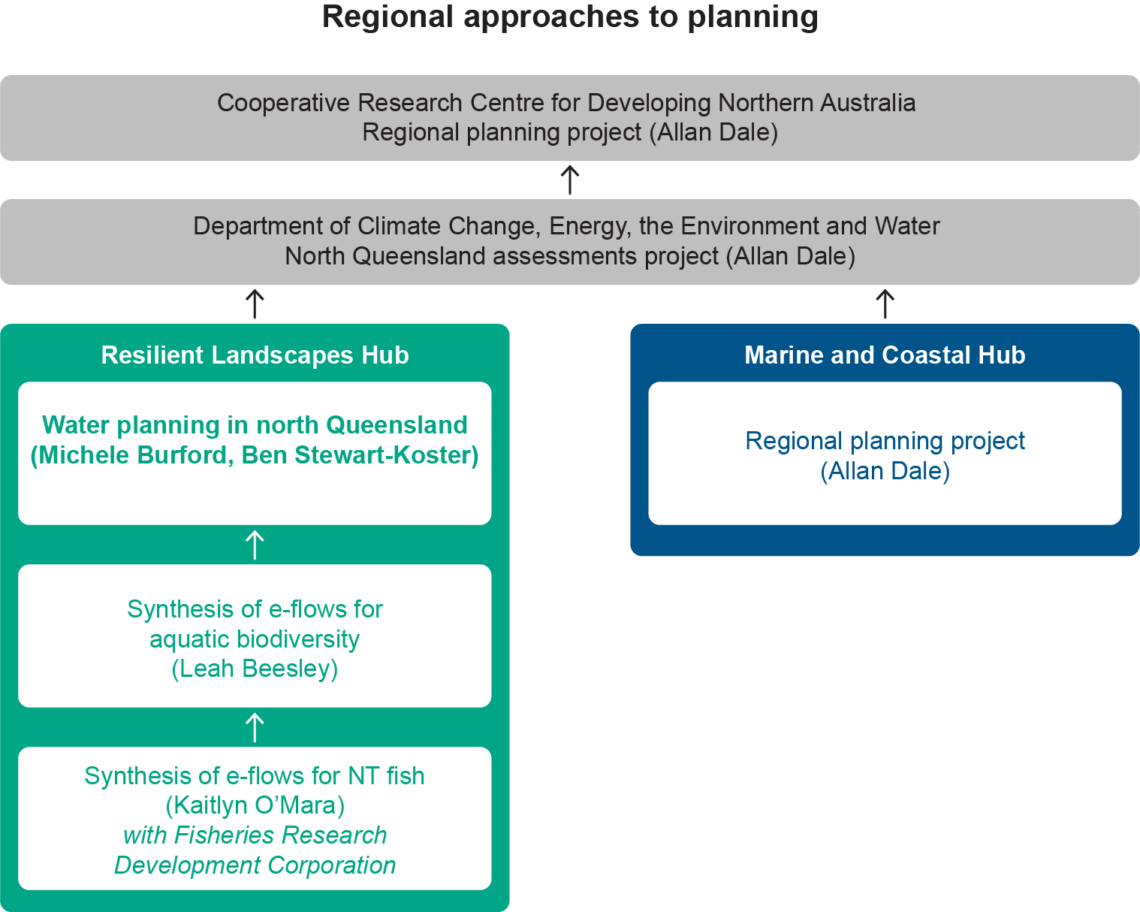Project start date: 18/07/2022
Project end date: 30/06/2024
NESP funding: $400,443 (GST-exclusive)
This project is using the western Cape York Peninsula and south-east Gulf of Carpentaria region as a case study to examine the relevance of existing risk-assessment frameworks and biodiversity maps for a regional approach to the Environment Protection and Biodiversity Conservation Act 1999 (EPBC Act).
To ensure biodiversity is protected, individual developments in northern Australia are currently assessed under the EPBC Act and other state planning legislation. However, there is a need to take a broader regional approach to assessing risks posed by the cumulative impacts of multiple developments.
The Cape York Peninsula and southern Gulf of Carpentaria region in Queensland is area of particular interest for future development. This includes proposals for mining, and water storage and extraction for irrigated agriculture. Each of these can impact water resources, biodiversity and culturally significant locations and values.
Although the predicted impacts from individual developments may appear to be relatively minor, there is a risk that the ‘tyranny of small decisions’ could culminate in unexpected consequences for water quality, biodiversity and cultural values. This issue therefore provides a potential case study for an integrated, regional approach to identifying risks from development to environmental and cultural values.
In the first phase of the project, we are focusing on compiling information that can inform or be used in a future risk-assessment process. This includes collating tools, previous research outputs and a broad range of stakeholder perspectives so that the risk-assessment process is applicable across the study region and robust in a variety of situations. Additionally, we are examining current biodiversity maps, which are based on suitable habitats, to identify biodiversity hotspots, and compare these hotspots with potential water development areas.
During the second phase we will work with a broader range of stakeholders to assess and refine the information collected in the first phase. Our team will then assess the information in the context of decadal patterns in water flows, possible future trends, and how these patterns might impact ecosystem productivity, health and cultural values over the long term.
As of October 2023, the project has been extended to include a third phase, where we will develop ecohydrological rules by integrating the research findings from phases 1 and 2, and studies in previous NESP and TRaCK projects, and others. This information will be used to inform water planning for the Gulf rivers. We will use new approaches for spatial mapping of water persistence into freely available models for water planning.
Through this project, we are providing information to improve outcomes for environmental and cultural values from the decision-making processes relevant to developments in the context of the EPBC Act and other risk-assessment schemes. We are also contributing to integrated planning and assessment work within an Australian Department of Climate Change, Energy, the Environment and Water (DCCEEW) Environment Assessments Qld contract project and linking with the Marine and Coastal Hub’s project Supporting regional planning in northern Australia.

Links between regional-planning projects.
Key research areas
To address this challenge, this project aims to develop better outcomes for biodiversity and the environment by:
The area of focus is the western Cape York and south-east Gulf of Carpentaria region but the results will be more broadly applicable across northern Australia.
Project leaders
The project is being led by Professor Michele Burford and Dr Ben Stewart-Koster from Griffith University. The project is collaborating with projects led by multiple other hubs and organisations, and will also be contributing to one of the cross-cutting initiatives:
Contact
For further information, contact m.burford@griffith.edu.au, b.stewart-koster@griffith.edu.au or nesplandscapes@uwa.edu.au.
Research users
People